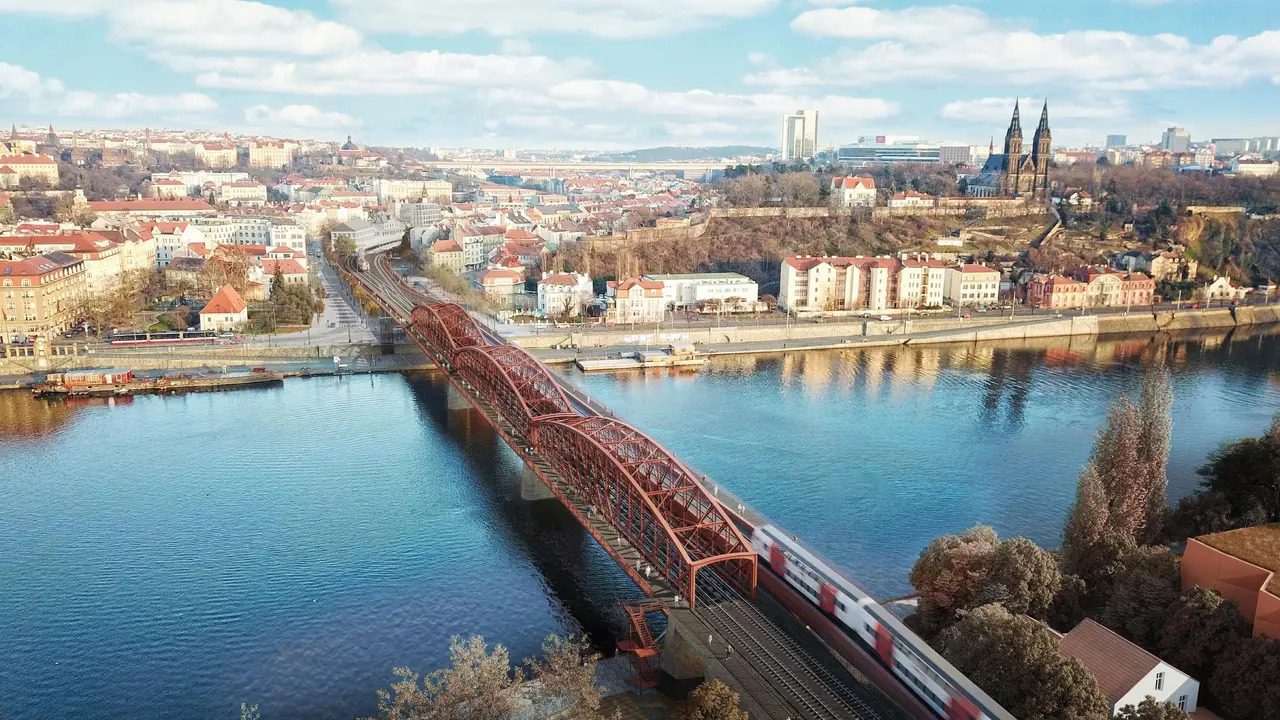In a groundbreaking proposal, a team of British, Swiss, and Czech experts have presented a feasible solution to renovate the iconic railway bridge beneath Vyšehrad in Prague. This protected monument, known for its riveted construction, has been at the center of a heated debate between preservationists and those advocating for its replacement.
The feasibility study, commissioned by the Foundation for the Preservation of the Vyšehrad Railway Bridge, was unveiled on Thursday at Prague’s DOX Center for Contemporary Art. Transport Minister Martin Kupka and representatives from the Railway Administration were present for the reveal, which Kupka described as “a completely new approach” to the bridge’s necessary reconstruction.
Swiss bridge expert Andreas Galmarini and British colleague Ian Firth, who personally assessed the bridge’s condition last December, spearheaded the renovation plan. Their proposal suggests that only about 15 percent of the bridge’s elements need replacement, equating to roughly 261 tons out of the total 1773 tons. This renovation could extend the bridge’s lifespan by a century.
The renovation plan includes a novel approach to adding a third track. Instead of altering the existing two-track structure, architects Petr Tej and urban planner Marek Kopeč propose a separate, slender construction for the third track on the bridge’s southern side. This design aims to preserve Prague’s iconic skyline.
Cost estimates for the renovation project range from 2.55 billion crowns to 2.82 billion crowns, depending on whether a new stop is created at Výtoň or if the Vyšehrad station is reactivated. These figures are notably lower than the 3.4 billion crowns estimated for a complete bridge replacement.
The proposal has garnered positive initial reactions from officials. Railway Administration chief Jiří Svoboda expressed interest in the new information presented, particularly the possibility of extending the bridge’s life by a century through minimal replacement. As the dialogue continues, this innovative approach could set a new standard for preserving historical infrastructure while meeting modern needs.





